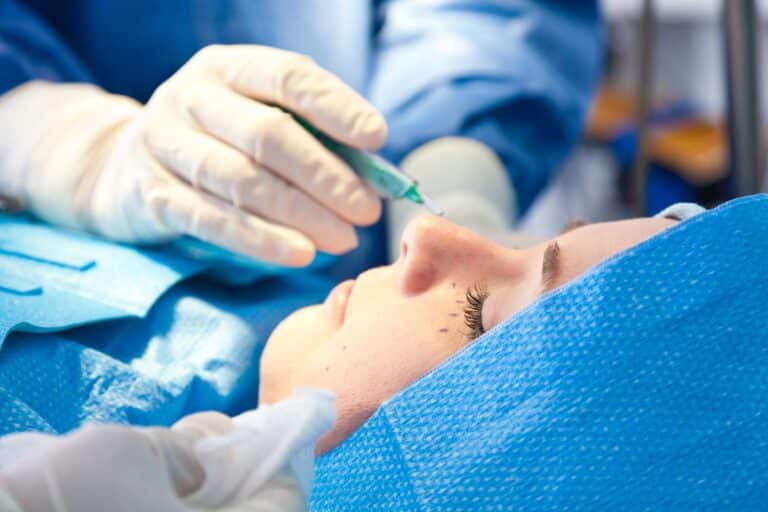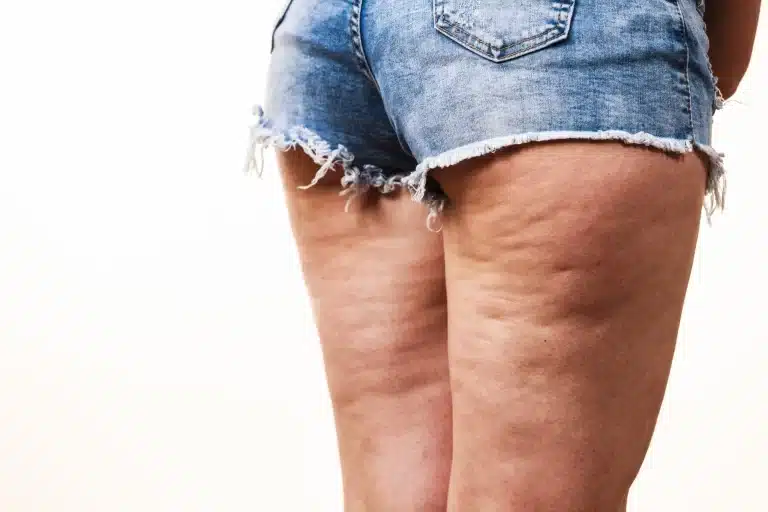How to Firm Sagging Skin in Your 50s: 7 Effective Tips
As we age, skin changes become more noticeable, especially in our 50s. It’s a time when maintaining youthful skin can feel challenging. However, simple skin tightening tips for men can make a significant difference.
Incorporating the right skincare routine for men and lifestyle choices is essential. Hydration, sun protection, and nourishing ingredients are key players. Regular exercise boosts circulation and promotes elasticity. These strategies not only enhance your appearance but also boost confidence. Embracing these tips helps you feel vibrant and radiant at any age.
Key Takeaways
- Stay Hydrated: Drink plenty of water daily to help maintain skin elasticity and reduce the appearance of sagging skin.
- Incorporate Collagen-Rich Foods: Add foods like bone broth, fish, and leafy greens to your diet to support collagen production for firmer skin.
- Use Sunscreen Daily: Protect your skin from UV damage by applying sunscreen every day, regardless of the weather, to prevent further sagging.
- Consider Nonsurgical Treatments: Explore options like ultrasound or radiofrequency treatments for effective skin tightening without surgery.
- Adopt a Regular Exercise Routine: Engage in strength training and cardio exercises to combat muscle loss and improve overall skin tone.
- Try Natural Remedies: Use natural ingredients like aloe vera and coconut oil to boost skin elasticity and keep your skin moisturized.
Understanding Skin Changes in Your 50s
Collagen Decline
Skin aging becomes evident in your fifties. The body naturally produces less collagen and elastin during this time, affecting men and the effectiveness of aging skin care products. These proteins keep the skin firm and elastic. A decline leads to less firm skin. This change often causes sagging, especially around the jawline.
Common Areas of Concern
Certain areas show signs of aging more than others. The face, neck, and hands are particularly affected by sagging. Wrinkled jawlines become a common concern for many individuals. The skin on the neck may also lose its firmness in men, resulting in a crepey appearance. Hands may develop age spots and become thinner over time.
Environmental Factors
Environmental factors play a significant role in skin aging. Sun exposure is one of the main contributors to visible aging signs. UV rays damage skin cells and lead to premature wrinkles. Over time, this exposure can exacerbate existing issues like uneven skin tone and rough texture.
Importance of Skincare
A proper skincare routine helps combat these changes. Using an aging cream can improve skin texture and boost hydration. Many dermatologists recommend products with retinoids or hyaluronic acid for best results. These ingredients encourage cell turnover and help retain moisture in the skin.
Lifestyle Choices
Lifestyle choices also impact skin health. Smoking and excessive alcohol consumption can accelerate skin aging. Staying hydrated is crucial for maintaining youthful faces. Drinking enough water helps keep the skin plump and reduces dryness.
Regular Dermatologist Visits
Regular check-ups with a dermatologist are essential for monitoring skin health. Professionals can provide tailored advice based on individual concerns. They can recommend treatments that suit specific needs, such as fillers or laser therapy.
Nutrition’s Role
Diet plays a vital role in how skin ages. Consuming foods rich in antioxidants can protect against free radical damage. Fruits like berries and vegetables like spinach support overall skin health. Omega-3 fatty acids found in fish can also promote elasticity.
Causes of Sagging Skin
Genetics
Genetics plays a major role in skin elasticity. Some people inherit skin that is more resilient. Others may notice their skin sags earlier due to family traits. This genetic predisposition affects how the skin responds to aging. If parents had saggy skin, it is likely that their children will too.
Skin laxity often increases with age. The body’s production of collagen and elastin declines over time. These proteins help keep the skin firm and smooth. When they decrease, skin can become loose and saggy.
Gravity
Gravity affects everyone as they age. Over time, it pulls down on the skin, leading to drooping. This force contributes significantly to sagginess in areas like the neck and cheeks. People may notice this change in their 50s when skin starts to lose its tightness.
The impact of gravity is unavoidable. It combines with other factors like aging and sun exposure. Together, these elements can make the skin appear older than it is.
Lifestyle Choices
Lifestyle choices also influence skin health. Smoking is one habit that accelerates sagging skin. It damages collagen and reduces blood flow to the skin. This leads to a saggy appearance and can worsen existing wrinkles.
Poor diet plays a crucial role as well. A diet low in vitamins and antioxidants can harm skin quality. Foods rich in sugars and unhealthy fats can lead to inflammation. This inflammation contributes to loose skin over time.
Staying hydrated is essential for maintaining skin elasticity. Lack of water intake can cause dryness and promote sagging. Drinking enough water helps keep the skin plump and youthful.
Sun Exposure
Sun exposure significantly impacts skin condition. UV rays damage collagen and elastin fibers in the skin. Over time, this leads to increased skin laxity and sagging. Protecting the skin from the sun is vital for preserving its firmness.
Using sunscreen daily can help combat these effects. Wearing protective clothing also shields the skin from harmful rays. Limiting sun exposure during peak hours further protects against damage.
Lifestyle Tips for Firmer Skin
Balanced Diet
A balanced diet plays a crucial role in maintaining firm skin. Foods rich in antioxidants, like berries and leafy greens, help combat free radicals. These free radicals can damage the skin’s dermis, leading to wrinkles and sagging. Vitamins A, C, and E are essential for skin health. They support collagen production and promote youthful skin.
Healthy fats are also important. Omega-3 fatty acids found in fish and nuts can improve skin elasticity. Eating a variety of colorful fruits and vegetables ensures you get the nutrients needed for supple skin.
Hydration
Regular hydration is vital for maintaining moisture levels in the skin. Drinking enough water helps keep your skin plump and reduces the appearance of crinkles. Aim for at least eight glasses of water daily.
Using a good facial moisturizer also aids in retaining moisture. Look for products that contain hyaluronic acid or glycerin. These ingredients draw water into the skin, keeping it hydrated throughout the day.
Regular Exercise
Incorporating regular exercise into your routine improves circulation. Better blood flow means more oxygen and nutrients reach the skin. This can enhance your overall complexion and help achieve firmer skin.
Facial exercises tone the muscles beneath the skin, which can reduce sagging. Simple movements like raising your eyebrows or puckering your lips can make a difference over time.
Skincare Regimen
An effective skincare regimen is essential for aging skin care. Use products specifically designed for mature skin. Look for aging skin care products with retinoids or peptides that boost collagen production.
Apply sunscreen daily to protect against UV damage. Sun exposure can accelerate aging and lead to wrinkled skin. Choose a broad-spectrum SPF 30 or higher.
Lifestyle Factors
Lifestyle factors also influence skin firmness. Smoking can cause premature aging and contribute to sagging skin. Quitting smoking improves overall health and benefits your complexion.
Stress management is equally important. High stress levels can lead to hormonal changes that affect your skin’s appearance. Techniques like yoga or meditation can help reduce stress.
Natural Remedies to Boost Elasticity
Topical Treatments
Topical treatments can greatly enhance skin elasticity. Retinoids are known for their ability to stimulate collagen production. This helps reduce laxity and improve skin texture. Applying retinoid creams regularly can lead to noticeable improvements.
Vitamin C serums also play a crucial role. They help in the formation of collagen, which is vital for maintaining skin strength. Using these serums daily can result in firmer, more resilient skin. Both retinoids and vitamin C provide hydration, which is essential for youthful-looking skin.
Facial Exercises
Facial exercises strengthen the muscles beneath the skin. These exercises can improve overall appearance and tone. Simple movements like cheek lifts or jawline tightening can make a difference over time. Consistency is key; performing these exercises several times a week yields the best results.
In addition to muscle strengthening, these exercises promote blood circulation. Improved circulation leads to better oxygen flow and nutrient delivery to the skin. This contributes to enhanced elasticity and a healthier glow.
Natural Oils
Natural oils are excellent for boosting moisture levels. Coconut oil is rich in fatty acids that hydrate the skin deeply. It also contains antioxidants, which help combat damage from free radicals. Applying coconut oil daily can improve skin texture and elasticity.
Almond oil is another great option. It’s light but packed with nutrients that nourish the skin. Almond oil contains vitamin E, which helps maintain moisture levels and supports skin repair. Regular use can lead to softer, smoother skin.
Hydration Importance
Staying hydrated is vital for maintaining skin elasticity. Drinking enough water daily keeps the skin plump and reduces dryness. Dehydrated skin tends to look dull and saggy, emphasizing wrinkles.
Incorporating hydrating foods into your diet also helps. Fruits like watermelon and cucumber have high water content. These foods not only support hydration but also provide vitamins that benefit the skin.
Lifestyle Considerations
Lifestyle choices impact skin health significantly. Avoiding excessive sun exposure protects against damage that leads to laxity. Wearing sunscreen daily is essential, even on cloudy days.
Quitting smoking improves blood flow, enhancing skin appearance. A balanced diet rich in antioxidants supports overall health and skin vitality. Regular exercise promotes circulation, benefiting your complexion as well.
Nonsurgical Treatments for Skin Tightening
Laser Treatments
Laser treatments are popular for nonsurgical skin tightening. They work by stimulating collagen production in the skin. This process helps to improve elasticity. As a result, skin appears firmer and more youthful. The heat from the laser penetrates deep layers of skin. This triggers the body’s natural healing response. Many clinics offer these treatments, often with minimal downtime.
Various types of lasers exist for different skin needs. For example, fractional lasers target specific areas without damaging surrounding tissue. This method reduces the risk of side effects. Patients can expect noticeable improvements after several sessions.
Chemical Peels
Chemical peels are another effective option for improving skin texture and firmness. These treatments involve applying a chemical solution to the skin’s surface. The solution removes dead skin cells and promotes new cell growth. As a result, skin looks smoother and younger.
Different strengths of chemical peels exist, ranging from light to deep peels. Light peels require little recovery time but may need multiple sessions for best results. Deep peels provide more dramatic changes but require longer recovery periods.
Many patients report improved appearance after just one treatment. It helps reduce deep wrinkles and uneven texture on the face.
Micro-Needling
Micro-needling is gaining popularity as a technique for skin rejuvenation. This method involves using tiny needles to create micro-injuries in the skin. These injuries stimulate the body’s healing process and boost collagen production.
The treatment is effective for various concerns, including wrinkles and sagging skin. Many dermatologists recommend it as part of a comprehensive facial rejuvenation plan. Patients often notice smoother skin after just one session.
Micro-needling can also enhance the effectiveness of topical products. Applying serums after treatment allows deeper penetration into the skin layers.
Radiofrequency Treatments
Radiofrequency (RF) skin tightening is another nonsurgical option available today. RF energy heats the dermis, promoting collagen remodelling treatment beneath the surface. This process tightens loose skin over time.
Patients may experience some discomfort during the procedure, but it is generally well tolerated. Results can last for months with proper maintenance.
This treatment is suitable for various areas, including the jawline and neck.

Facial Exercises
Facial exercises can complement these treatments effectively. Simple jawline exercises help tone muscles and improve overall appearance. Regular practice can lead to visible results over time.
Incorporating these techniques into daily routines may enhance outcomes from other treatments.
Ultrasound and Radiofrequency Solutions
Ultrasound Technology
Ultrasound technology uses sound waves to penetrate deeper layers of the skin. This method targets the dermis and subcutaneous tissues, promoting tightening without damaging the surface.
Doctors apply a handheld device that emits ultrasound waves. These waves create heat in the deeper layers. The heating stimulates collagen production, which is essential for skin elasticity. Many people see results after just one treatment, with effects improving over time as collagen builds up.
Radiofrequency Treatments
Radiofrequency treatments utilize radio waves to heat the skin’s tissues. This method also encourages collagen synthesis. The device heats the dermis while keeping the outer layer safe.
During a session, the doctor moves a handheld device over the treatment area. The heat from radiofrequency can improve skin texture and tone. Many people choose this option for its non-invasive nature. Results often last for several months, making it a popular choice among those in their 50s.
Recovery Times
Recovery times vary between ultrasound and radiofrequency treatments. Ultrasound typically requires little to no downtime. Patients can return to normal activities immediately after treatment.
In contrast, radiofrequency may cause mild swelling or redness. These effects usually resolve within a few hours to a day. Most patients find they can resume daily activities quickly.
Both methods offer effective results for skin tightening. However, individual experiences may differ based on skin type and condition. Consulting with a qualified doctor is crucial to determine the best option.
Summary of Benefits
- Ultrasound: Targets deeper layers, minimal downtime, gradual improvement.
- Radiofrequency: Promotes collagen production, slightly longer recovery, noticeable texture changes.
Choosing between these two technologies depends on personal preferences and goals. Each has unique benefits that cater to different needs.
Impact of Hormonal Changes on Skin
Menopause Effects
Menopause brings significant hormonal changes. During this time, estrogen levels drop sharply. Estrogen is vital for maintaining skin thickness and elasticity. Lower estrogen results in thinner skin. This change can lead to more noticeable skin issues like wrinkles and sagging.
The decrease in estrogen also affects collagen production. Collagen is crucial for skin structure. With less collagen, the skin becomes less resilient. Women may notice their facial skin appears dull or uneven. These changes often start in a woman’s late 40s but become more pronounced in her 50s.
Hormonal Imbalances
Hormonal imbalances contribute to accelerated skin aging. Fluctuations in hormones can lead to dryness and irritation. This makes the skin more susceptible to sun damage. UV exposure can worsen existing skin conditions. It’s essential to protect the skin from harmful rays, especially during this period.
Stress can also disrupt hormone levels. Increased cortisol can lead to breakouts and other issues. The combination of stress and hormonal changes creates a perfect storm for skin problems. Women need to be aware of how these factors interact.
Hormone Replacement Therapy
Hormone replacement therapy (HRT) offers potential relief for some women. HRT aims to restore hormonal balance by supplementing estrogen. This can help improve skin thickness and moisture levels. Studies suggest that HRT may reduce signs of aging in the skin.
However, HRT is not suitable for everyone. It carries risks and side effects that women must consider. Consulting with a healthcare provider is crucial before starting any treatment. They can provide personalized advice based on individual health needs.
e non-hormonal options exist as well. These include topical treatments rich in antioxidants and peptides. Such products may help combat the effects of aging without altering hormone levels.
Lifestyle Changes
Adopting healthy lifestyle habits can support skin health during this transition. Staying hydrated helps maintain skin elasticity. A balanced diet rich in vitamins C and E supports collagen production.
Regular exercise boosts circulation, promoting healthier skin overall. Avoiding smoking and excessive alcohol consumption protects against premature aging as well.
Women should also prioritize sun protection daily. Using broad-spectrum sunscreen helps prevent further sun damage. Wearing hats or seeking shade during peak hours provides additional defense.
Importance of Collagen in Skin Firmness
Role of Collagen
Collagen is a primary structural protein in the skin. It provides strength and elasticity. As women age, collagen levels decrease. This loss leads to sagging skin and wrinkles. Maintaining skin firmness relies heavily on adequate collagen production.
Dietary Sources
Certain foods can help improve skin collagen levels. Bone broth is rich in collagen. Fish, particularly salmon, contains omega-3 fatty acids that support collagen synthesis. Fruits like oranges and berries are high in vitamin C, which is essential for collagen formation. Leafy greens also contribute to overall skin health.
Supplements can also aid in boosting collagen levels. Hydrolyzed collagen peptides are easily absorbed by the body. Many women find that taking these supplements improves their skin appearance over time.
Protecting Collagen
Protecting collagen from degradation is crucial for maintaining skin firmness. Sun exposure is one of the main culprits in breaking down collagen. UV rays damage skin cells and accelerate aging. Regular use of sunscreen can help shield the skin from harmful rays.
Antioxidants play a role in protecting collagen too. They neutralize free radicals that cause oxidative stress. Incorporating foods rich in antioxidants, such as nuts and green tea, can be beneficial.
Lifestyle Changes
Adopting healthy lifestyle habits supports improved skin collagen levels. Staying hydrated is essential for skin elasticity. Drinking enough water helps maintain moisture balance in the skin.
Avoiding smoking is another important factor. Smoking damages blood vessels and reduces oxygen flow to the skin. This can lead to premature aging and reduced firmness.
Regular exercise promotes circulation, which aids in delivering nutrients to the skin. Activities like yoga or walking can enhance blood flow and support overall skin health.
Skincare Products
Choosing the right skincare products can also help with skin firming effects. Look for creams containing retinoids or peptides, as they stimulate collagen production. Products with hyaluronic acid can provide hydration, making skin appear plumper.
Incorporating these tips into daily routines can significantly impact skin firmness as women enter their 50s. The combination of dietary changes, protective measures, and proper skincare creates a comprehensive approach to maintaining youthful-looking skin.
Addressing Fat and Muscle Loss Effects
Facial Fat Loss
Facial fat loss is common as people age. This change often leads to a hollowed appearance. The cheeks may sag, and the skin can look less plump. This loss occurs because fat distribution shifts in the body. Areas that once held volume may become flatter.
The reduction of fat in the face can also affect how skin appears overall. Without this support, skin loses elasticity and firmness. It can create shadows and fine lines, making one look older.
Strength Training
Strength training is essential for counteracting muscle loss. As people reach their 50s, muscle mass tends to decrease. This decline affects not just strength but also skin support.
Engaging in regular strength exercises helps build muscle. Improved muscle tone lifts the skin and enhances its appearance. Exercises like weightlifting or resistance bands are effective. These activities stimulate collagen production too, which is critical for skin firmness.
A simple routine could include:
- Squats
- Push-ups
- Dumbbell rows
- Lunges
These workouts can be done at home or in a gym. Consistency is key to seeing results over time.
Fillers as Solutions
Fillers offer a temporary solution to restore volume and contour in the face. They can help replace lost fat and improve facial contours quickly. Many types of fillers exist, including hyaluronic acid and collagen-based products.
These treatments provide immediate results but require maintenance every few months. Consulting with a qualified professional ensures the right choice for individual needs. Fillers can boost confidence by enhancing one’s natural features.
Consider these factors when thinking about fillers:
- Desired look
- Budget
- Potential side effects
It’s important to weigh these options carefully before proceeding.
Final Remarks
Your skin undergoes significant changes in your 50s, but you can take charge. By understanding the causes of sagging skin and implementing lifestyle tips, natural remedies, and nonsurgical treatments, you can enhance your skin’s firmness. Don’t forget the crucial role of collagen and how hormonal shifts affect your skin.
Embrace these strategies to boost elasticity and combat fat and muscle loss effects. Each step you take can lead to a more youthful appearance and improved confidence. Start today by exploring the tips shared in this article. Your skin deserves the best care possible, so take action now!
Frequently Asked Questions
What causes sagging skin in your 50s?
Sagging skin in your 50s is primarily caused by decreased collagen production, loss of fat and muscle, and hormonal changes. These factors contribute to reduced skin elasticity and firmness.
How can lifestyle changes improve skin tightness?
Adopting a healthy diet, staying hydrated, exercising regularly, and avoiding smoking can enhance skin tightness. These habits promote better circulation and support skin health.
Are there natural remedies for skin tightening?
Yes, natural remedies like aloe vera, coconut oil, and egg white masks can help boost skin elasticity. They provide hydration and nutrients essential for firmer skin.
What are the best nonsurgical treatments for skin tightening?
Popular nonsurgical treatments include laser therapy, microneedling, and chemical peels. These procedures stimulate collagen production and improve skin texture without invasive surgery.
How do ultrasound and radiofrequency treatments work?
Ultrasound and radiofrequency treatments use energy to heat the deeper layers of skin. This stimulates collagen production, leading to tighter, firmer skin over time.
How do hormonal changes affect skin in your 50s?
Hormonal changes during menopause can lead to decreased estrogen levels, resulting in thinner skin and reduced elasticity. This contributes to sagging and wrinkles.
Why is collagen important for skin firmness?
Collagen is a protein that provides structure and support to the skin. Maintaining collagen levels is crucial for retaining firmness and preventing sagging as we age.





